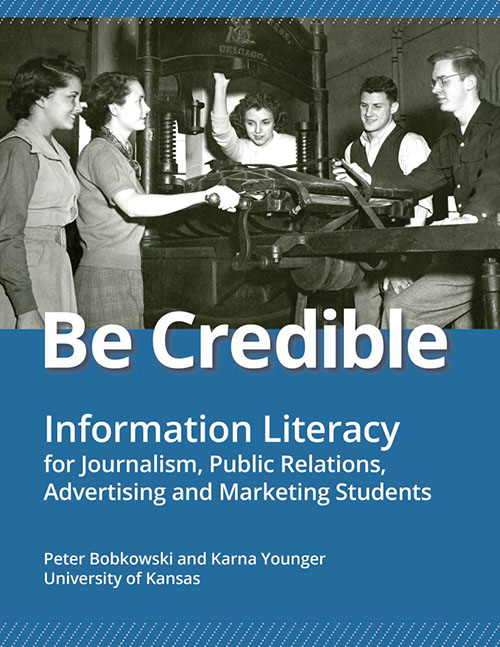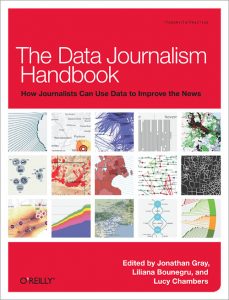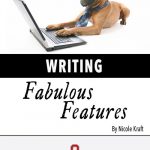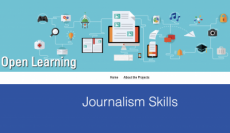Faculty of Communication & Design
Journalism
Be Credible: Information Literacy for Journalism, Public Relations, Advertising and Marketing Students
By: Peter S. Bobkowski and Karna Younger, University of Kansas
 This book teaches college-level journalism students to become information experts. Using the themes of credibility and information literacy, the book helps today’s students, who start out all their research with Google and Wikipedia, to specialize in accessing, evaluating, and managing information that often is not accessible through Google searches.
This book teaches college-level journalism students to become information experts. Using the themes of credibility and information literacy, the book helps today’s students, who start out all their research with Google and Wikipedia, to specialize in accessing, evaluating, and managing information that often is not accessible through Google searches.
Includes: Current examples, instructional videos, suggested classroom activities, and practitioner insights.
Attribution: Be Credible: Information Literacy for Journalism, Public Relations, Advertising and Marketing Students by Peter S. Bobkowski and Karna Younger is licensed under a Creative Commons Attribution-NonCommercial 4.0 International (CC BY-NC 4.0) License.
The Data Journalism Handbook
By: Jonathan Gray, University College London, Lucy Chambers and Liliana Bounegru.
 This book provides an overview of the importance of data analysis and visualization in journalism.
This book provides an overview of the importance of data analysis and visualization in journalism.
Includes: Case studies.
Attribution: The Data Journalism Handbook by Jonathan Gray, Lucy Chambers and Liliana Bounegru is licensed under a Creative Commons Attribution ShareAlike 4.0 International License.
Writing Fabulous Features
By: Nicole Kraft, Ohio State University
 Writing Fabulous Features” teaches the art and craft of feature writing to help readers learning to write non-fiction with flair.
Writing Fabulous Features” teaches the art and craft of feature writing to help readers learning to write non-fiction with flair.
Includes: Examples of feature writing.
Attribution: Writing Fabulous Features by Nicole Kraft is licensed under a Creative Commons Attribution-NonCommercial-NoDerivatives 4.0 International (CC BY-NC-ND 4.0) License.
Journalism Skills
By: Lisa Taylor, Gavin Adamson and Nicole Blanchett Neheli, Ryerson University
 The topics for these six new modules were chosen after extensive consultation with our undergraduate faculty members. These six modules can be used as stand-alone learning objects, or provided as a “set” of modules to enhance an introductory level course provided as a hybrid model. Each of the modules’ primary topics will be addressed in three to five minute videos that situate the learning outcomes in the journalism context. In each case, the end of the video begins a formative, self-assessment phase by asking the student to problem solve. Next, multiple-choices and true-false quizzes deliver more formative assessment, offering tips and full solution options.
The topics for these six new modules were chosen after extensive consultation with our undergraduate faculty members. These six modules can be used as stand-alone learning objects, or provided as a “set” of modules to enhance an introductory level course provided as a hybrid model. Each of the modules’ primary topics will be addressed in three to five minute videos that situate the learning outcomes in the journalism context. In each case, the end of the video begins a formative, self-assessment phase by asking the student to problem solve. Next, multiple-choices and true-false quizzes deliver more formative assessment, offering tips and full solution options.
Includes: Modules with videos and self-assessment quizzes.
Attribution: Journalism Skills by Lisa Taylor, Gavin Adamson and Nicole Blanchett Neheli is licensed under a Creative Commons Attribution-NonCommercial-NoDerivatives 4.0 International (CC BY-NC-ND 4.0) License.
If you have questions about Open Educational Resources or other Open resources in your subject area, please contact your subject liaison librarian.

